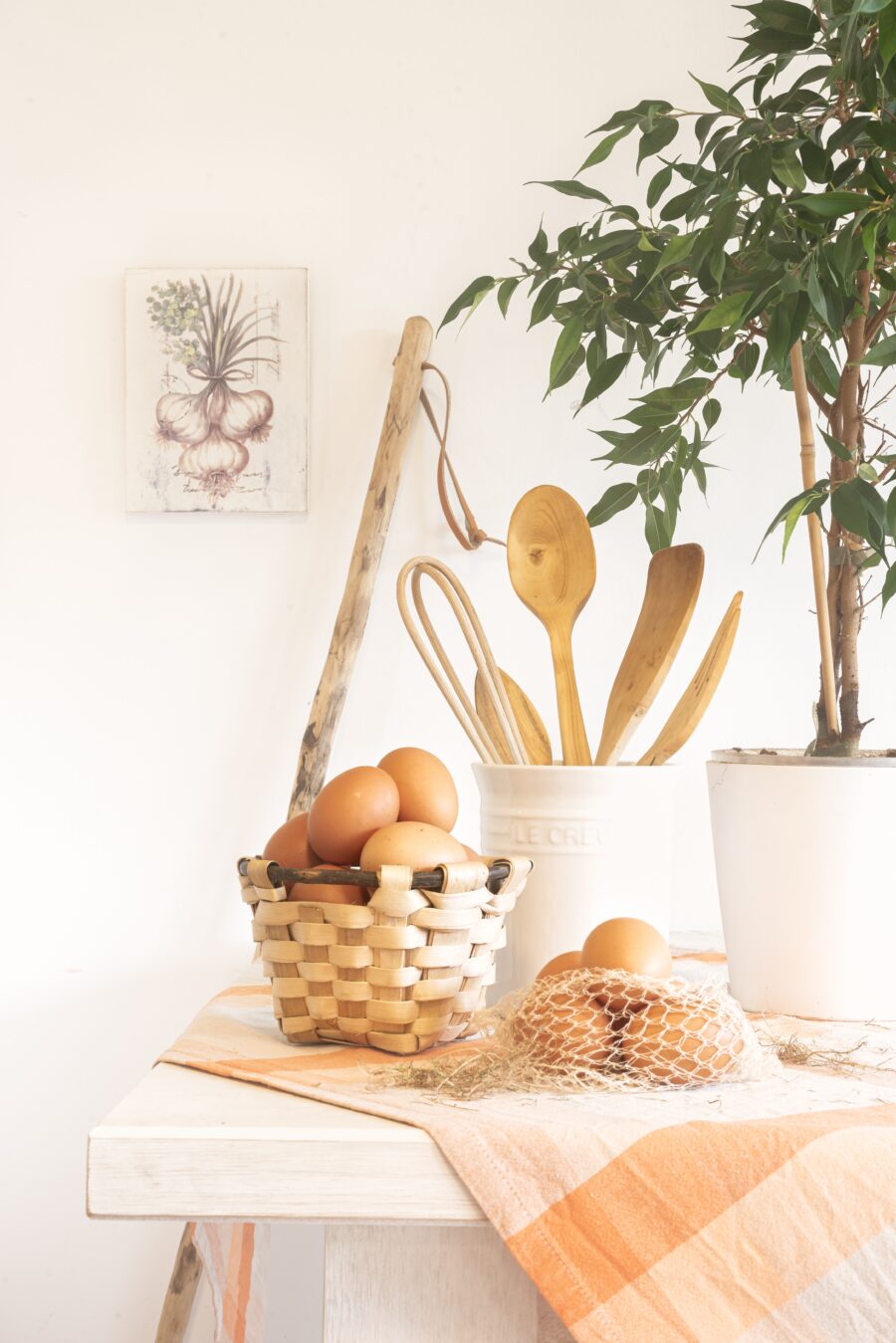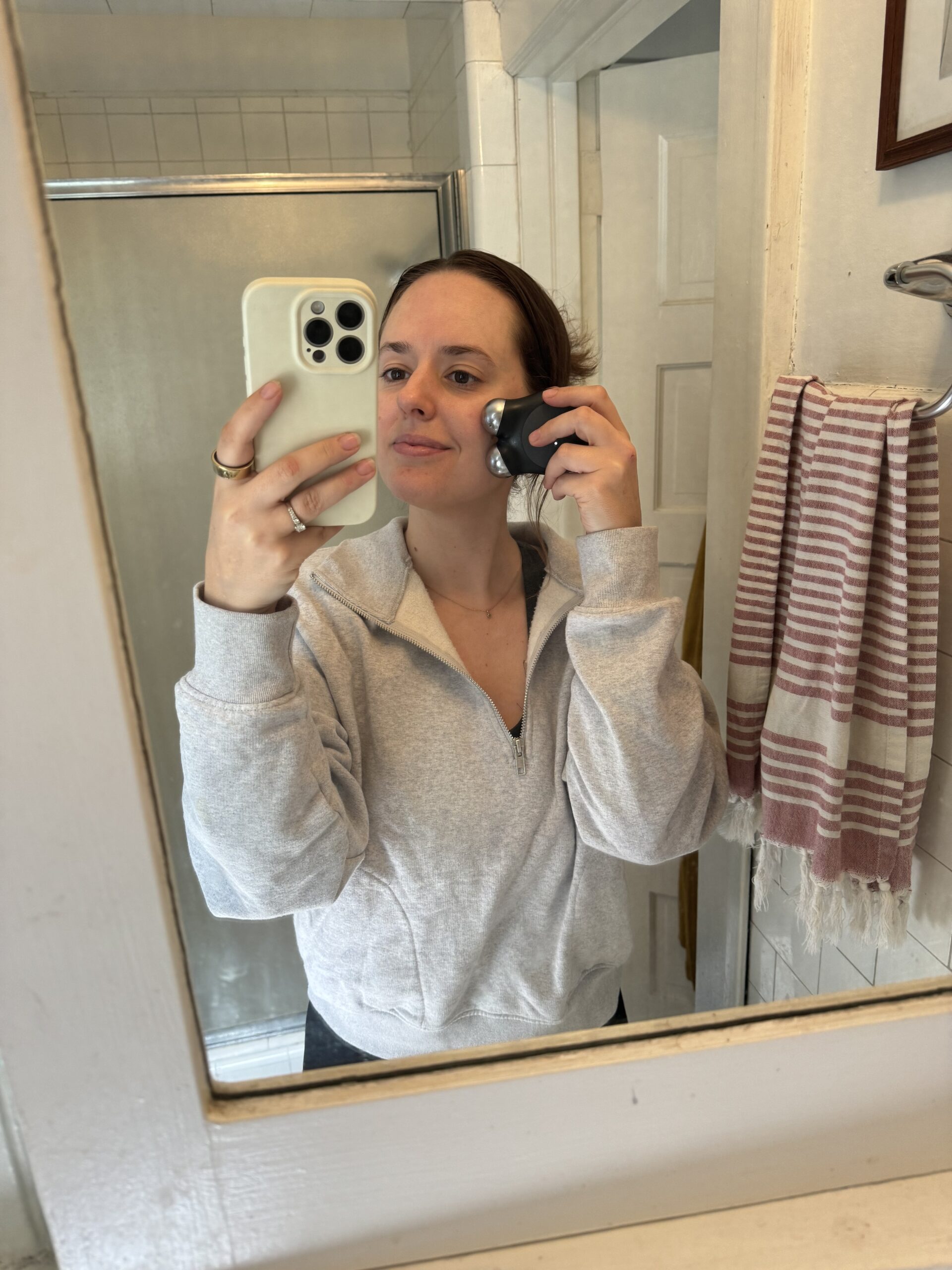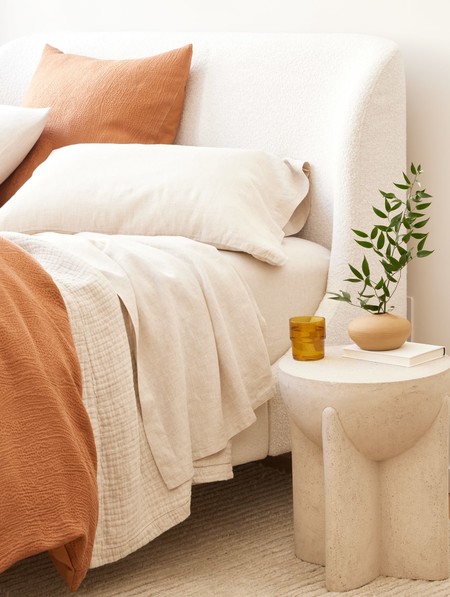
How Joy-Driven Eating Has Changed My Relationship With Food
Historically, my feelings around food have been pragmatic.
It wasn’t uncommon to sit down to eat only to look up just a moment later and find licked-clean forks and a few crumbs left.
I grew up in a productivity-focused environment that sang clichés like “Food is fuel” and “Eat to live; don’t live to eat.” My mom dutifully cooked most nights—roasted chicken, macaroni and cheese, the occasional frozen lasagna. After piling up our plates in the kitchen, my family would collapse on the couch, and we’d wolf down dinner without much thought as to what we were tasting. It wasn’t uncommon to sit down to eat only to look up just a moment later and find licked-clean forks and a few crumbs left.
With so many dinners spent in front of the TV, mealtime wasn’t a moment for my family to unwind from our days as we filled our bellies. Rather, it was an irritating pit stop before the stint of chores or schoolwork before bed, and we routinely checked it off as just another item on the to-do list. The underlying message was that eating was a burden. Eating was a task to complete as quickly as you could chew, making the potential delight of a thoughtful meal not worth investing in.
The busier I was, the less eating well, if at all, was a priority.
This passive relationship with food carried over into my adult life. The busier I was, the less eating well, if at all, was a priority. I’d spend many late nights scrounging the back of the freezer in hopes of a TV dinner I forgot I purchased, or I would slather a slice of bread with peanut butter just to get my stomach to stop growling so I could get back to work.
It wasn’t until developing severe acne in my mid-20s when something changed. After my dermatologist prescribed me a medication I didn’t want to take, I heard an internal voice whisper, “Your face is telling the story of what’s happening beneath your skin.” I politely declined the prescription and left the doctor’s office that morning, determined to find a holistic approach. I had little control over the factors that contributed to my breakouts—I couldn’t force them to heal quicker or prevent new blemishes from forming—but I could control what I was feeding my body. As I learned how to be more thoughtful of what I ate, food began to not only bring me healing but bring me surprising joy as well.
I started with grocery shopping. Previously, this was a tedious errand. I’d grab my basket and mindlessly zoom through the aisles with the same enthusiasm as driving my morning commute. I’d throw in the usual items—a box of this, a can of that—and get out of there as quickly as I came in.
Suddenly, I was exploring the color cornucopia of the supermarket, and it began to shift my relationship with food.
In my revamp, however, I began to walk the store slowly, letting my eyes wander. I took note of what caught my gaze without judgment—the hues of reds, greens, and yellows speckling the apple selection, the starchy rough skins of heaps of potatoes, the variety of bread and rice and pasta. Even if I had no idea what an item was or how to prepare it, I honored the fact that my eyes were drawn to it and placed it in the cart. Suddenly, I was exploring the color cornucopia of the supermarket, and it began to shift my relationship with food.
I started seeing ingredients in the grocery store like art supplies I could take home, blend, and play with. With the inspiration of open cookbooks on my coffee table and the feeds of a handful of Instagram accounts guiding me, I started experimenting with ingredients new to my kitchen and new to me. A new world gradually opened up, and it smelled delicious.
My most beloved meal became a hearty breakfast of pasture-raised eggs cooked over-easy with roasted sweet potatoes prepared with salt, pepper, garlic powder, and paprika. I’d break the yolk and it would run over the potatoes like a gentle waterfall. On the side, I’d add fresh microgreens and a handful of blueberries. With this dance of colors, my breakfast plate became a delicious treat for my eyes each morning, and as time went on, that flimsy beige packet of oatmeal I was previously settling for would no longer do.
I learned to trust my intuition as I developed my taste buds and began to see my plate like a canvas.
I won’t lie. As I toyed with ingredients I’d never cooked with before, I made a lot of bizarre, unpalatable meals. Trial and error led many items to the trash in blurred memories of rubbery eggplant and couscous gone wrong. But gradually, I learned to trust my intuition as I developed my taste buds and began to see my plate like a canvas. If a meal came off visually bland, I’d find the right color to make it pop. Maybe it was a handful of dried cranberries for a dash of deep red or chopped walnuts for crunch and a neutral break between hues. Whatever the ingredient, I found the relation to color, taste, and nutrition intertwined in such a way that it made meal prep an exciting arrangement to create rather than a mundane task to endure.
For the first time, food became a space for joy. After a while, I learned to concoct dishes I could feel my heart and body thanking me for as I ate them–dishes I no longer wanted to mindlessly devour in front of the TV or quickly consume between sessions of work: Fluffy quinoa served as a bed for angle-cut asparagus dressed in tangy, dark balsamic vinegar. Chunky chorizo stew sprinkled with thinly sliced green onions made each steamy spoonful feel like a loving hug from a burly grandpa. Toasted bruschetta peppered with fresh basil and a glass of chilled Pinot Grigio—are we in Italy?
Nutritionists call this eating the rainbow. Colors in fruits and vegetables indicate the presence of rich phytonutrients, a compound that Harvard Medical School reports protects us from chronic diseases. Suddenly there was intentionality put into every bite, and I could not resist savoring it.
Meals are still “fuel” to me, but now in a way that is much more joy-driven, creative, and life-giving. The act of preparing a nutritious and colorful plate is no longer a task to put up with. It’s a daily gift to indulge in.
The act of preparing a nutritious and colorful plate is no longer a task to put up with. It’s a daily gift to indulge in.
Rethinking our relationship with food and cooking can feel complex, emotional, and daunting. So let’s start with one meal. Let’s start with one plate. If we stop to notice its hues, textures, temperatures, and portions, we can identify the gaps and experiment to create balance. Whether it be a different color to add depth or a grain or veggie to incorporate a new shape, our plates are our canvases, and we have all the intuition we need to paint them beautifully.
Cheyanne Solis is a writer from California. When she’s not planning weddings or acting like a grandpa by bird-watching in the park with a copy of the Sunday Times, she is falling into fascination about the human experience, working to write words to wrap around it all.



